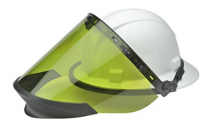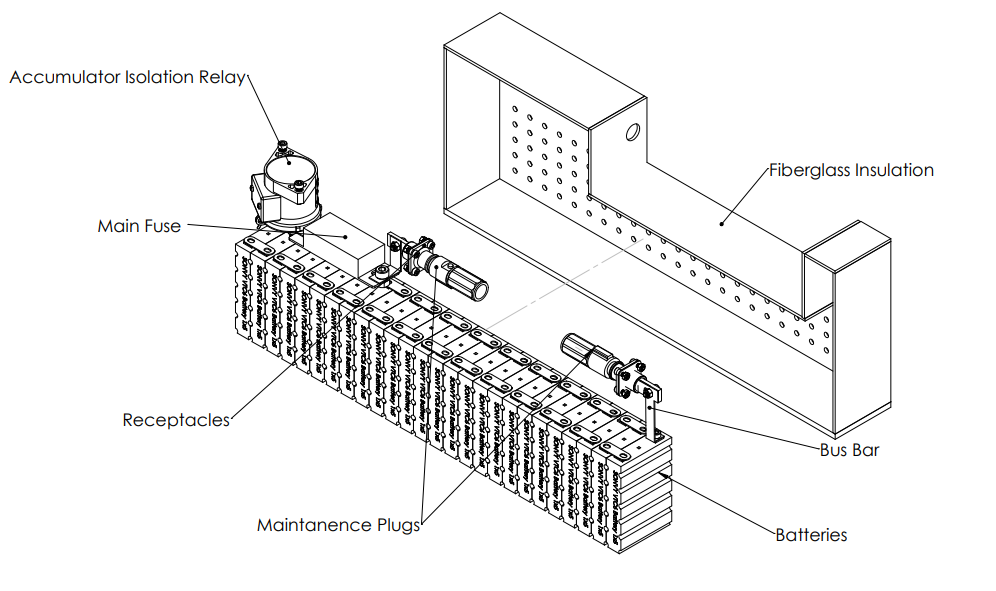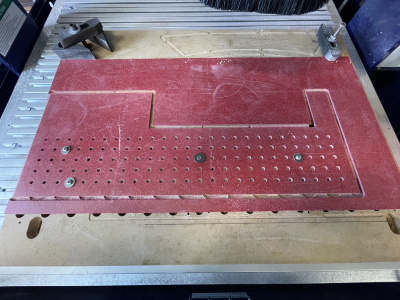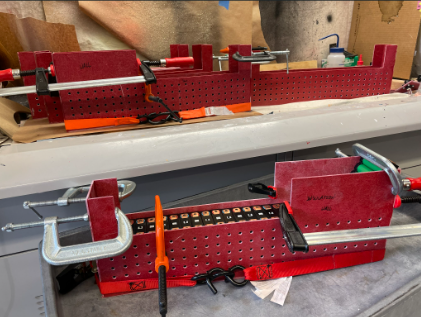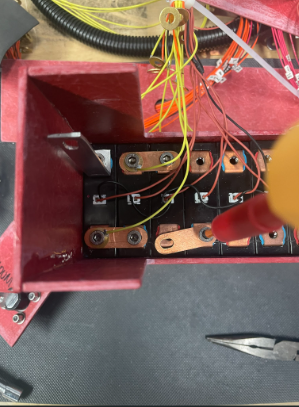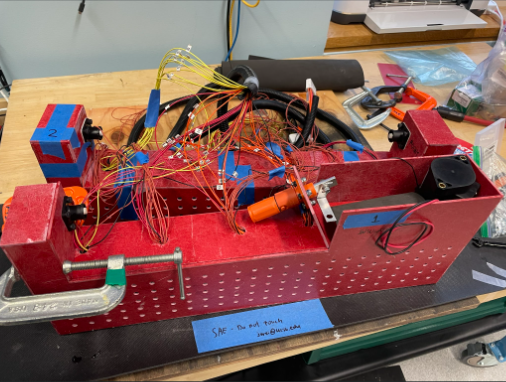sae_battery_segment_manufacture_assembly
Table of Contents
CNSI Innovation Workshop and Microfluidics Lab Battery Segment Manufacturing & Assembly Safe Operating Procedures
Last Updated: 6/6/23 Jason
This SOP provides a guide to safely manufacture and assemble battery segments of the GR23 electrical vehicle. Some of the information is compiled from the following sources.
Location
Battery assembly should take place on one of the workbenches in the Innovation Workshop in Elings 2442.
Overview
- Safety considerations, how they can occur, and how to avoid electrical accidents
- Battery segment design
- Necessary materials, tools, and equipment
- Machining of insulation panels
- Assembly of Enepaq modules within insulation
Safety Considerations
- Electrical shock & arc flash
- There are two primary ways that direct current electrical injury can occur:
- Body completing the loop in a high voltage circuit (touching positive and negative terminals of a high potential battery segment)
- Non-insulated tool or a conductive material completes the circuit in a medium to high voltage circuit, generating an explosive arc that can produce intense heat
- Electrical Insulating PPE
- Referencing this Electrical Insulating PPE Guide and NFPA 70E PPE, working with electric potentials between 50-750VDC (GR23 battery segment is 110V max voltage, entire battery pack is 546V max voltage) requires:
- nonconductive safety glasses
- long sleeve shirt & pants
- closed toed shoes
- Workspace
- As mentioned above, ensure that no non-insulated tools can fall across battery terminals or be accidentally used (remove all non-insulated tools that are magnetically attached above the workbench)
- Workspace and ground should be covered with electrically insulating mats
- No machining of metals should occur while battery segment terminals are exposed
- Machining Fiberglass
- Machining fiberglass can produce fine resin and glass particles that can be harmful if inhaled
- Keep particles contained in CNC router enclosure
- Use vacuum attachment
- Wear masks
- Wipe up particles often
Battery Segment Design
Necessary Materials, Tools, and Equipment
- Electrical Insulating PPE
- Referencing this Electrical Insulating PPE Guide and NFPA 70E PPE, working with electric potentials between 50-750VDC (GR23 battery segment is 110V max voltage, entire battery pack is 546V max voltage) requires:
- electrically insulating class 00 gloves
- nonconductive safety glasses
- insulated tools
- long sleeve shirt & pants
- closed toed shoes
- electrically insulating mat
- arc-flash face shield
- Drill bits & end mills for insulation panel machining
- Epoxy for assembling panels
- Wires & solder
Machining of insulation panels
- Fixture panels, program cam, and set up tools on ShopBot Router referencing ShopBot SOP
- Set up vacuum attachment and wear masks to minimize inhalation of fine fiberglass particles
- File edges of panels to remove sharp glass fibers
Assembly of Enepaq modules within insulation
- Insert modules with correct polarities and use epoxy to bond base and side panels of segment
- Wear proper PPE (listed in safety considerations section); those without PPE should remain five feet away and connect modules together using bolts and busbars
- Cover work surface and ground with electrically insulating mat and use insulated tools
- Attach voltage taps under bolt heads using solder if necessary (onto copper washers)
- Attach temperature sensing wires to module xr connector
- Route wires through holes in top panel
- Connect voltage taps carefully and avoid short circuiting any modules
- Bond top panels to enclose segment
sae_battery_segment_manufacture_assembly.txt · Last modified: 2023/06/06 18:58 by wei


